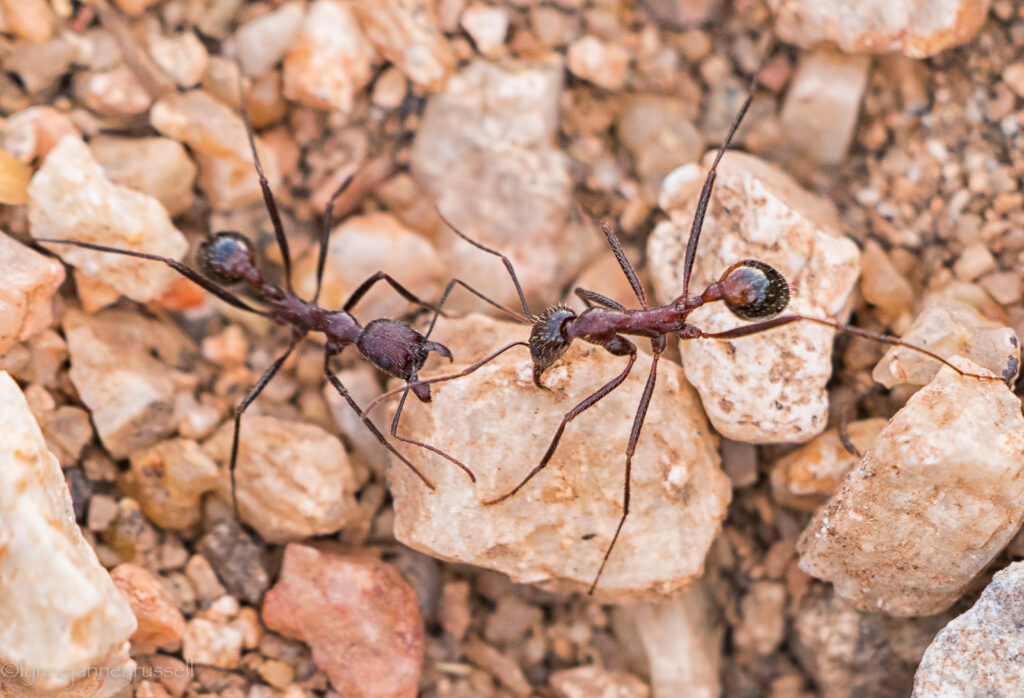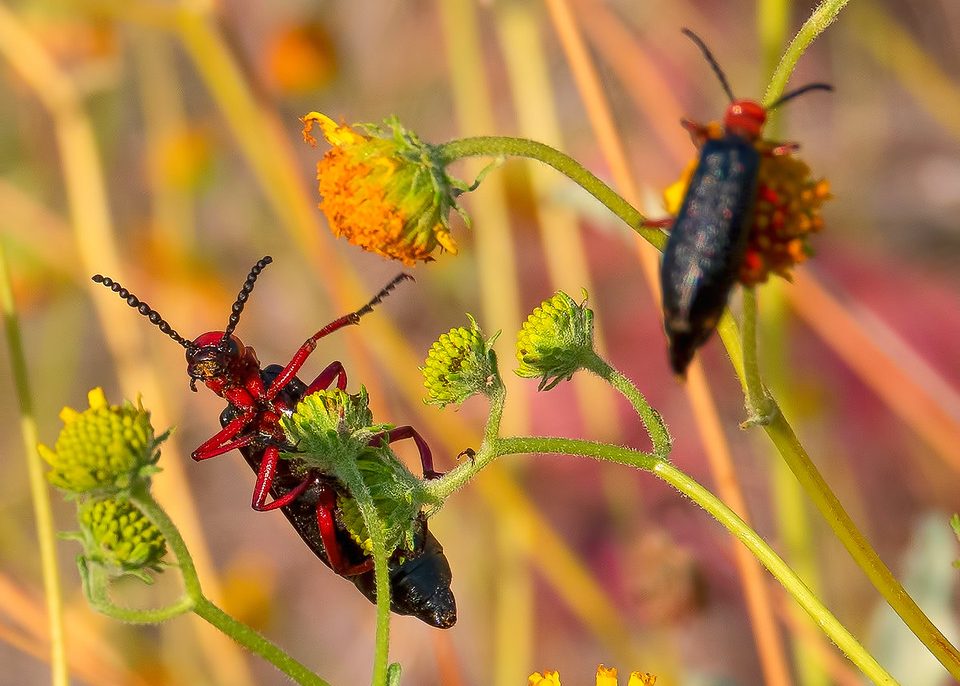Long-Term Monitoring of Arthropods
Why it Matters
Arthropods are the most diverse group of invertebrates and include animals such as arachnids, insects, crustaceans, and centipedes. Arthropods play vital roles within ecosystems, often comprising the majority of animal biomass and serving as a critical link in the food chain. Ground-dwelling arthropods, such as ants, many beetles, and scorpions, are considered ecosystem engineers because of their role in decomposing organic materials, altering soil structure, and maintaining or improving water filtration.
However, some arthropod groups are experiencing what has been dubbed an “insect apocalypse” with losses across arthropod groups between 30–60% over the last 40 years.1,2 Ground-dwelling arthropod and other insect communities may be particularly susceptible to climate change and urbanization, with implications for vital ecosystem processes.3,4 Unfortunately, these trends are seen even in protected areas.1 At the same time, the sensitivity of ground-dwelling arthropods to changes in the environment makes them excellent bioindicators of ecosystem change.5,6 Thus, monitoring this group of animals can be valuable to detecting changes in ecosystem function.
The Conservancy's Work

Monitoring these organisms over the long term provides an important indicator of local ecosystem function and change. Since 2012, the Conservancy has been conducting research by collecting ground-dwelling arthropods at regular intervals at sites throughout Scottsdale’s McDowell Sonoran Preserve. The sampling design pairs sites in the interior of the Preserve to sites near the urban edge, enabling comparison of variation due to natural fluctuations versus human-caused changes. This information not only helps inform management of the Preserve but also feeds into regional efforts as part of the Valley-wide arthropod collections of the Central Arizona–Phoenix Long-Term Ecological Research (CAP LTER) project, a National Science Foundation-funded initiative.
To collect ground-dwelling arthropods, pitfall traps are set at eight sites within the Preserve (four interior locations and four at the urban edge). Four times per year, these traps are left open for 72 hours and then closed again. Arthropods that have fallen into the traps are collected and preserved for later identification. The information collected provides the number of species and relative abundance of arthropods in areas close to the urban edge versus paired natural sites over time.
What's Been Found
Since 2012, more than 25,000 organisms have been collected through this project. The diversity of arthropods in the Preserve is high, with over 300 unique taxa identified. Much of that diversity stems from the varied habitats throughout the Preserve, and unique arthropod communities have been observed in the northern and southern regions of the Preserve. A recent published analysis of the data by research collaborators at Northern Arizona University (NAU) indicates that the ground-dwelling arthropod community in the Preserve responds strongly to temperature and rainfall.7 Furthermore, shifts in community structure, such as an increase in invasive species, are more likely to occur during certain seasons.7 These findings suggest that arthropod communities may be susceptible to the pressures of climate change, which is helpful information for preserve managers tasked with mitigating detrimental changes to biological communities.7

How You Can Help
Tracking biodiversity trends is one of the best ways we can protect Sonoran Desert species and their habitats. That’s why we need your support. You can ensure the desert will continue to thrive and be a place for all to enjoy, now and for future generations to come.
1. Document any arthropod you see on iNaturalist and help scientists better understand their distribution
2. Learn more about Ants at AntWiki!
3. Use Symbiota Collections of Arthropods Network SCAN online to learn which arthropods are near you.
4. Support the McDowell Sonoran Conservancy with a donation or volunteer as a Conservancy Steward
McDowell Sonoran Conservancy Staff Contact
Jessie Dwyer | 480-998-7971 ext. 104 |
jessie@mcdowellsonoran.org
15300 North 90th Street, Suite 400, Scottsdale, Arizona, 85260
Partners
Dr. Stevan Earl, CAP LTER Information Manager, Arizona State University Global Institute of Sustainability and Innovation
Dr. Rich Hofstetter, Professor of Forest Entomology, Northern Arizona University School of Forestry
Dr. Derek Uhey, Assistant Professor, Northern Arizona University School of Forestry



1. Wagner, D. L. Insect declines in the anthropocene. Rev. Entomol. 65, 457–480 (2020).
2. Dirzo, R. et al. Defaunation in the Anthropocene. Manag. Rev. 31, 386–408 (2006).
3. Koltz, A. M., Schmidt, N. M. & Høye, T. T. Differential arthropod responses to warming are altering the structure of arctic communities. Soc. Open Sci. 5, (2018).
4. Bang, C. & Faeth, S. H. Variation in arthropod communities in response to urbanization: Seven years of arthropod monitoring in a desert city. Urban Plan. 103, 383–399 (2011).
5. Maleque, M. A., Maeto, K. & Ishii, H. T. Arthropods as bioindicators of sustainable forest management, with a focus on plantation forests. Entomol. Zool. 44, 1–11 (2009).
6. Kremen, C. et al. Terrestrial Arthropod Assemblages: Their Use in Conservation Planning. Biol. 7, 796–808 (1993).
7. Uhey, Derek A., et al. "Living on the edge: The sensitivity of arthropods to development and climate along an urban-wildland interface in the Sonoran Desert of central Arizona." Plos one 19.4 (2024): e0297227.




